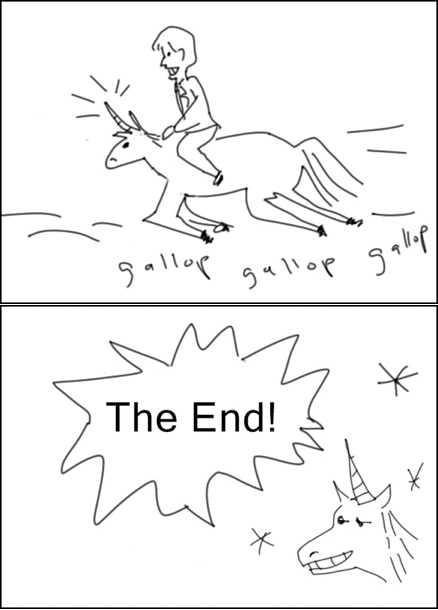When025 Archivesa banner ad not a banner ad? When it's a hidden video ad generating fraudulent advertising revenue while draining your phone battery and using your valuable data allowance.
As BuzzFeed reports, it's been discovered that in-app banner ads have been hijacked on a massive scale to generate revenue for fraudsters working within the digital advertising industry. The people who suffer are consumers and their devices, but also the app developers who receive complaints regarding how quickly their apps are draining phone and tablet batteries.
The fraud was discovered by two ad fraud labs, Protected Media and DoubleVerify. Fraudsters purchase cheap in-app banner display space, but then hide auto-playing videos behind the banner image users see. The video is never seen by anyone, but because it plays it's registered as viewed and therefore generates revenue for the fraudsters, and much more so than the banner ad does. It's the big brands that are paying, but unbeknown to them, they're paying for zero exposure of their products.
The video below demonstrates how the fraudulent video ads are hidden out of sight behind image banners:
As to the scale of this fraud, DoubleVerify gauged it at 60 million fraudulent video ads per month. The ad hijacking occurred on Twitter's MoPub ad platform, and Israeli company Aniview, which specializes in video advertising solutions, was highlighted as being one of the sources of those ads. The company's subsidiary OutStream Media was also identified by Protect Media as playing a part.
Aniview denies any direct involvement and has blamed "a malicious, unnamed third party" who took advantage of banner ads and code created by one of Aniview's subsidiaries. Aniview CEO Alon Carmel, told BuzzFeed that the company, "does not knowingly engage in any fraudulent activity" and that immediate action was taken, "we stopped this activity and started and continue an internal incident review."
Aniview isn't saying who the malicious third party is, but has since removed a number of employees from the company's website. They include Aniview co-founder Tal Melenboim and two employees who had leadership roles at OutStream Media. Melenboim has since denied being part of any illegal activity while at Aniview.
As Twitter's MoPub ad platform was used, Twitter has also triggered its own investigation after verifying the activity Protected Media reported. If Twitter traces this back to Aniview, then there will surely be consequences for the advertising company.
It's important to point out that this type of fraud isn't new, but a spike in activity back in October sparked the ad fraud companies to look more closely. Aniview also isn't the only company identified as taking part, with several others continuing to filter these hidden video ads into the digital advertising market. One of the companies Protected Media contacted responded with a complaint that everybody does it and it felt like they were being picked on.
(Editor: {typename type="name"/})
 Robin Triumphant
Robin Triumphant
 Donald Baechler, Untitled, 2012 by The Paris Review
Donald Baechler, Untitled, 2012 by The Paris Review
 Romance of the Rose: On Jay DeFeo by Yevgeniya Traps
Romance of the Rose: On Jay DeFeo by Yevgeniya Traps
 POSTERITY IS STUPID by Italo Calvino
POSTERITY IS STUPID by Italo Calvino
 Waitin’ on the Student Debt Jubilee
Waitin’ on the Student Debt Jubilee
Exceptionally rare radio sources detected in the distant universe
 Astronomers have spotted a pair of exotic features believed to be the aftermath of a colossal cosmic
...[Details]
Astronomers have spotted a pair of exotic features believed to be the aftermath of a colossal cosmic
...[Details]
Donald Baechler, Untitled, 2012 by The Paris Review
 Donald Baechler, Untitled, 2012By The Paris ReviewMay 9, 2013The Print SeriesSince 1964 The Paris Re
...[Details]
Donald Baechler, Untitled, 2012By The Paris ReviewMay 9, 2013The Print SeriesSince 1964 The Paris Re
...[Details]
Wordle today: Here's the answer and hints for June 27
 Can't get enough of Wordle? Try Mashable's free version now S
...[Details]
Can't get enough of Wordle? Try Mashable's free version now S
...[Details]
Dylan Thomas: Under Milk Wood by Sadie Stein
 Dylan Thomas: Under Milk WoodBy Sadie SteinMay 15, 2013ListenVia the 92nd Street Y, the only known r
...[Details]
Dylan Thomas: Under Milk WoodBy Sadie SteinMay 15, 2013ListenVia the 92nd Street Y, the only known r
...[Details]
'The Last of Us' Season 2, episode 4: Why Ellie sings 'Take on Me'
 As a TV adaptation of Naughty Dog's games, The Last of Usincludes more than a few hidden references
...[Details]
As a TV adaptation of Naughty Dog's games, The Last of Usincludes more than a few hidden references
...[Details]
The Great Gatsby—With a Unicorn by Oliver Miller
 The Great Gatsby—With a UnicornBy Oliver MillerMay 28, 2013Arts & CulturePausePlayPlayPrev
...[Details]
The Great Gatsby—With a UnicornBy Oliver MillerMay 28, 2013Arts & CulturePausePlayPlayPrev
...[Details]
 YouTube has been making some big announcements for creators at this year's VidCon.Yesterday, Mashabl
...[Details]
YouTube has been making some big announcements for creators at this year's VidCon.Yesterday, Mashabl
...[Details]
Pomp and Circumstance by The Paris Review
 Pomp and CircumstanceBy The Paris ReviewMay 17, 2013BulletinWe won’t pretend to be completely disint
...[Details]
Pomp and CircumstanceBy The Paris ReviewMay 17, 2013BulletinWe won’t pretend to be completely disint
...[Details]
Watch how an old Venus spacecraft tumbled before crashing to Earth
 Before a Soviet-era spacecraft intended for Venuscrashed back to Earth over the weekend, German astr
...[Details]
Before a Soviet-era spacecraft intended for Venuscrashed back to Earth over the weekend, German astr
...[Details]
Garry Winogrand and the Art of the Opening by Richard B. Woodward
 Garry Winogrand and the Art of the OpeningBy Richard B. WoodwardMay 13, 2013Arts & CultureGarry
...[Details]
Garry Winogrand and the Art of the OpeningBy Richard B. WoodwardMay 13, 2013Arts & CultureGarry
...[Details]
SpaceX's Starlink will provide free satellite internet to families in Texas school district

'Quordle' today: See each 'Quordle' answer and hints for June 24

接受PR>=1、BR>=1,流量相当,内容相关类链接。